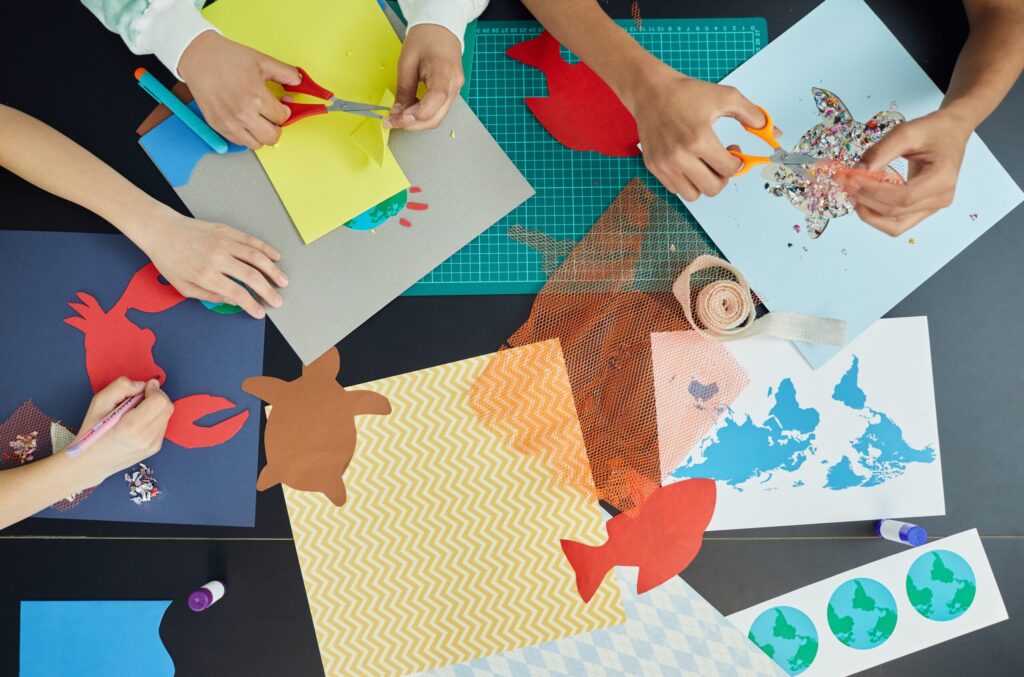No products in the cart.
All Blogs
Discover How Craft Games Are Inspiring Children to Identify Themselves Through Art
Craft games are a wonderful way to encourage children to explore their creativity, develop their imaginations, and express themselves through art. These games provide a fun and engaging way for kids to experiment with different art techniques and materials, while also developing important skills such as hand-eye coordination, problem-solving, and critical thinking.
However, the benefits of craft games go beyond just the development of artistic and technical skills. They can also help children to identify themselves through art, by providing a platform for self-expression and self-discovery. In this blog, we will explore how craft games can inspire children to connect with their inner selves and explore their identity through art.
Crafting a Sense of Self: The Power of Art in Children’s Development

Emphasizes the importance of art in children’s development and self-discovery. It highlights the role of craft games in helping children express themselves creatively and develop a sense of identity through their art. It also explores the psychological benefits of art, such as improved emotional regulation and enhanced self-esteem. This subtitle provides insight into how parents and caregivers can use craft games to support children’s growth and development.
Self-expression is an essential part of human experience, and it plays an especially important role in children’s development. When children are given the opportunity to express themselves through art, they learn to communicate their thoughts and feelings in a nonverbal way. This can be especially important for children who struggle with verbal communication, as it provides them with a new means of expression.
Craft games offer children a safe and playful space for self-expression. By experimenting with different materials and techniques, children can create art that is uniquely their own. They can use art to express their emotions, ideas, and experiences in a way that is personal and meaningful to them.
From Imagination to Identity: How Craft Games Help Kids Express Themselves

The ways in which craft games help children express themselves and develop a sense of identity. It discusses the power of imagination and creativity in shaping children’s self-concept, and how craft games provide a safe and playful space for self-expression. It also highlights the benefits of collaborative play and the social skills that children can develop through crafting together. This subtitle provides practical tips for parents and caregivers looking to use craft games to support their children’s self-expression.
Identity is a complex and multifaceted concept that encompasses many different aspects of our lives. It includes our sense of self, our beliefs and values, our interests and hobbies, and our relationships with others. Identity is especially important for children, as they are in the process of developing their sense of self and figuring out who they are in the world.
Art can be a powerful tool for exploring identity, as it allows children to create images that represent their thoughts and feelings about themselves and the world around them. Through art, children can explore their interests and passions, express their emotions, and develop a sense of their own unique identity.
Craft games are particularly effective for encouraging children to explore their identity through art. By providing a variety of materials and techniques, craft games allow children to experiment with different forms of artistic expression. This can help them to discover new talents and interests, and to develop a sense of who they are and what they value.
Playful Exploration: Using Crafts and Games to Foster Creativity and Self-Discovery

This subtitle highlights the playful and exploratory nature of craft games, and their potential to foster creativity and self-discovery in children. It discusses the benefits of open-ended play and the ways in which craft games can encourage children to experiment, take risks, and try new things. It also explores the ways in which craft games can help children learn and develop new skills, such as problem-solving and critical thinking. This subtitle provides inspiration for parents and caregivers looking to use craft games as a tool for creative and educational play.
Craft games can also help children to feel a sense of belonging, by connecting them with others who share their interests and passions. When children participate in craft games with their peers, they have the opportunity to share their art, exchange ideas and feedback, and build relationships based on a shared love of creativity and self-expression.
This sense of belonging can be particularly important for children who feel isolated or marginalized in other areas of their lives. By participating in craft games, they can find a community of like-minded individuals who appreciate their unique perspectives and talents.
Craft games can also help children to develop important life skills such as problem-solving, critical thinking, and creativity. When children engage in craft games, they are encouraged to experiment, take risks, and try new things. This can help them to develop resilience and persistence in the face of challenges, and to learn from their mistakes.
Craft games can also help children to develop a growth mindset, by teaching them that their abilities and talents can be developed through practice and effort. By focusing on the process of creating art, rather than the end result, children can learn to appreciate the value of hard work and perseverance.
In addition to these skills, craft games can also help children to develop empathy and emotional intelligence. By creating art that represents their emotions and experiences, children can learn to identify and understand their own feelings, as well as those of others. This can help them to develop stronger relationships and to navigate the complexities of the social

